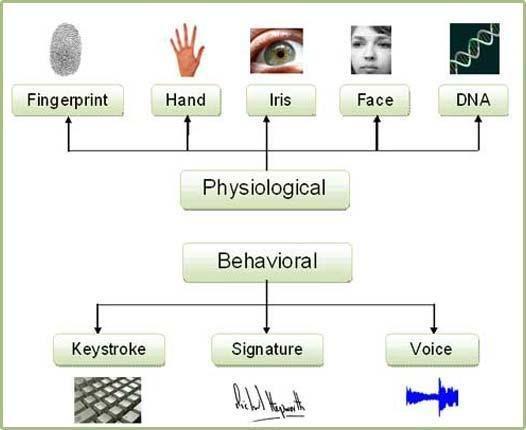Summary
One of the most important aspects of physical security is its manifestation in technology as the latter progresses and develops. In other words, physical events have cyber consequences and vice versa. Information technology (IT) physical security has more relevance and criticality today than ever, especially in the highly competitive business environment. The sophistication of technology-enabled a greater level of identification of key personal physical traits unique to an individual, and the use of this enhanced recognition is biometrics. A wide range of physical security and network protection measures can be protected by biometrics in an effective manner. The techniques include vascular pattern recognition, retinal and iris scanning, facial recognition, hand and finger geometry, fingerprinting, and behavioral formats, as shown in Figure 1 below (Hay, 2003). The process takes place in two steps, which involve identification and verification.

History
Firstly, the historical origins of biometrics can be traced back to 14th-century China. It was a fingerprinting technique where children’s palm prints and footprints were used to distinguish them apart (Hay, 2003). In the 18th century, Bertillonage was utilized to record a criminal’s body measurements, such as limbs, head, and body (Hay, 2003). However, the most sophisticated and advanced level of biometrics emerged in the last three decades, and it has become integral for physical security.
Physical Biometric Techniques
Secondly, when it comes to fingerprinting, it is the most well-known as well as oldest technique. The basic framework involves taking a snapshot image of one’s fingertips, where the specific pattern is recorded for future recognition (Hay, 2003). It can be performed either with the use of ink or a digital scanner, with the latter being preferred. The advantages are the convenience of not needing passwords, flexibility, unlimited user number, privacy, and compatibility (Hay, 2003). The disadvantages are scanner durability, high maintenance costs, and fake fingerprints. Hand geometry uses a hand’s and fingers’ unique geometry for identification purposes. The benefits are similar to fingerprinting with additional resistance to fooling, but hardware is costlier and larger, and hand geometry changes as a person ages (Hay, 2003). Facial recognition analyzes a person’s face, and it is non-intrusive, flexible, and easy to integrate (Hay, 2003). However, its faces are not as static as hands or fingerprints because of lighting, facial position, facial expression, background distortion, and fake faces.
In the case of iris scanning, the technique is highly accurate due to the uniqueness of human irises. It is non-invasive, convenient, and hard to replicate, but the equipment is expensive, eyelashes and eyelids obscure irises, and lighting is still an issue (Hay, 2003). Retinal scanning is the most accurate form of biometrics known today due to the complexity of the retina. The technique uses low-intensity light to read the retinal pattern, and it is outstanding for long-term use, 100% accurate, and non-replicable (Hay, 2003). However, it is invasive and uncomfortable to use because of reading challenges. Similar to the latter, the vascular technique also recognizes vascular patterns in one’s face or hands. Its advantages include accuracy and independence on external factors, but vasculature changes with aging and medical conditions.
Behavioral Biometric Techniques
Thirdly, speaker recognition identifies an individual’s voice and speech patterns for authentication. The technique is flexible, inexpensive, easy to implement, and convenient, but the problems include the possibility of faking through recorded voices and the unaccommodating nature of the hearing impaired (Hay, 2003). Signature recognition is low-cost and convenient but non-adaptive for foreign languages with no future prospects. Keystroke recognition is extremely cheap, but it has questionable accuracy.
Reference
Hay, R. (2003). Physical security: A biometric approach[PDF document].